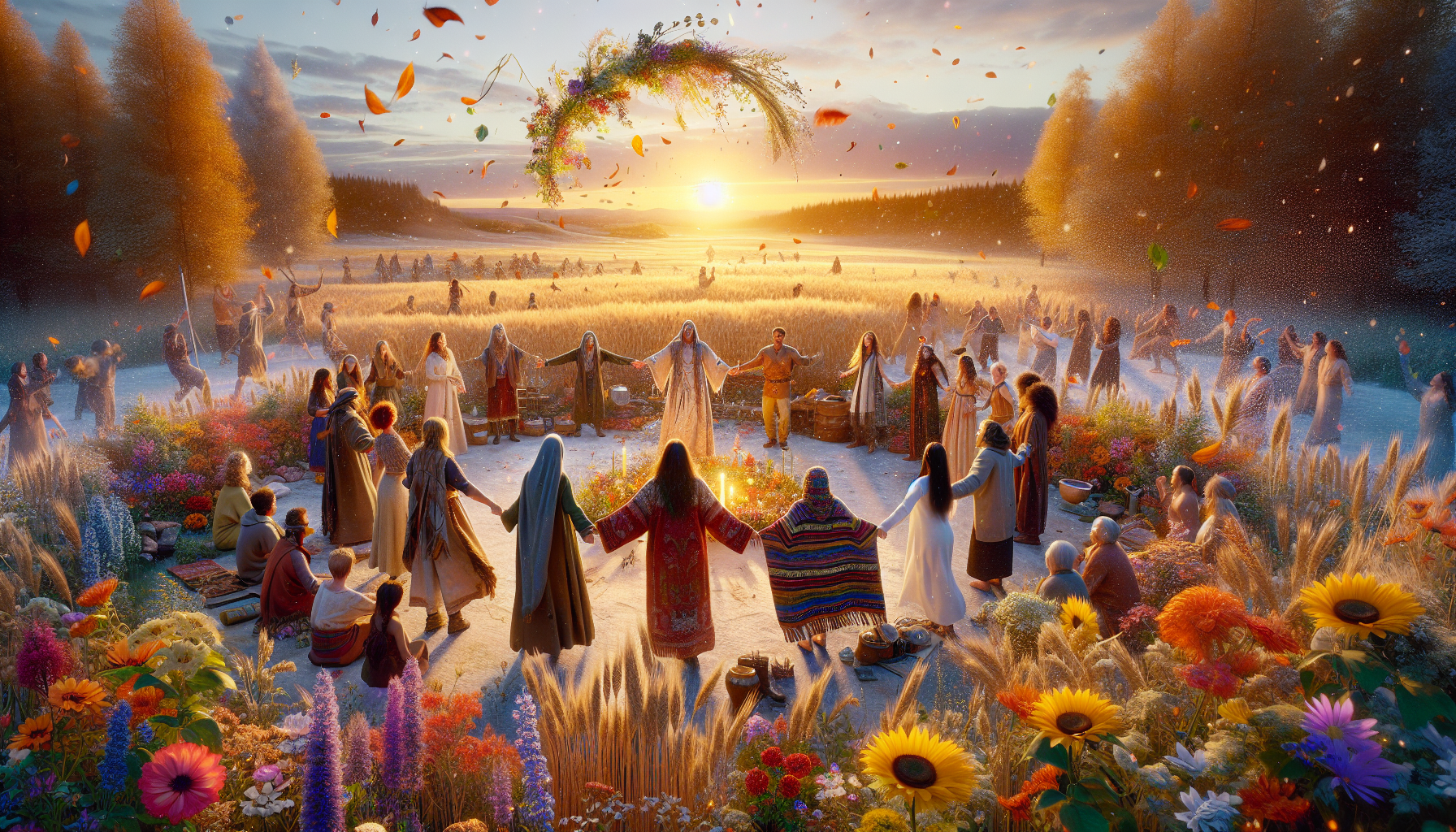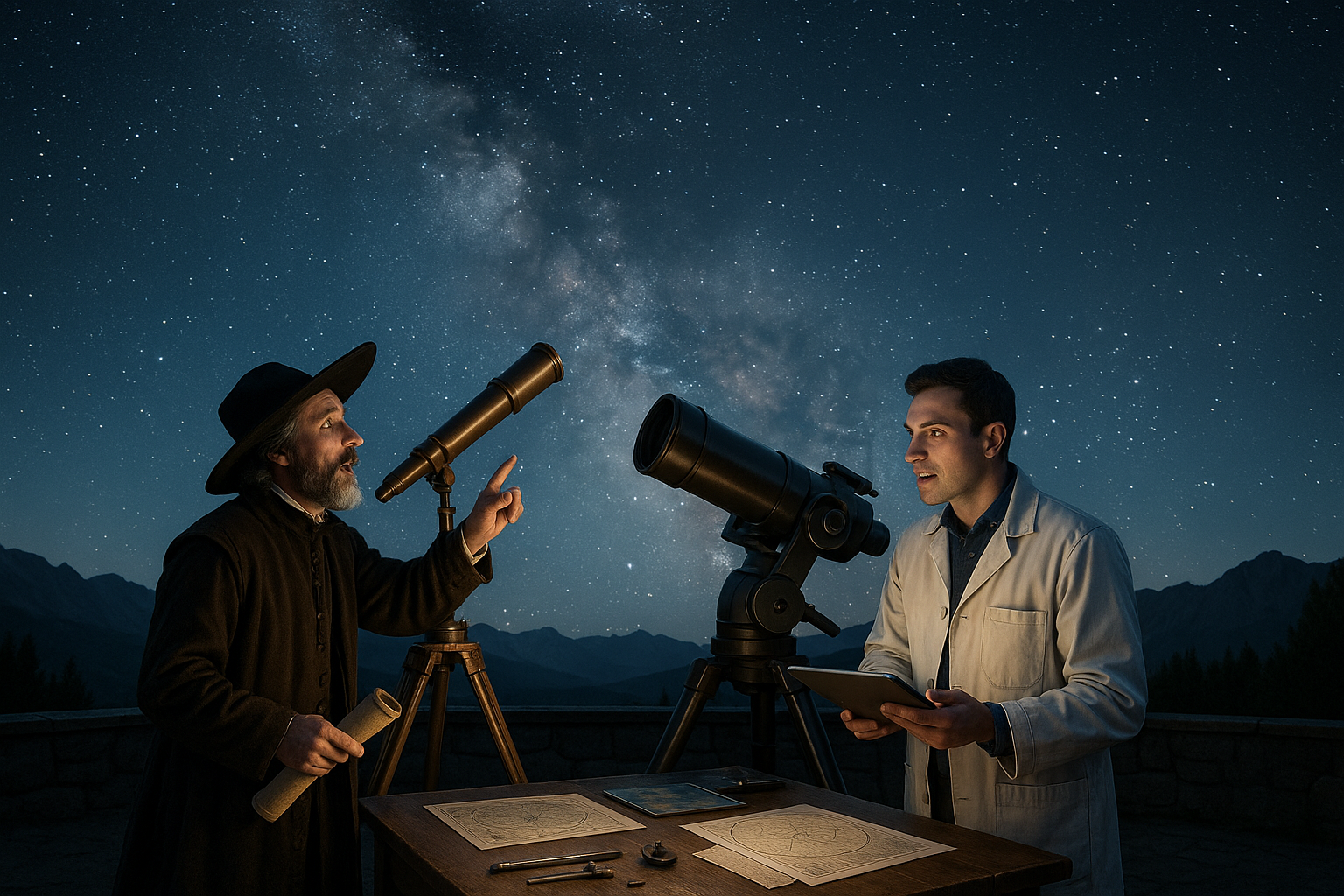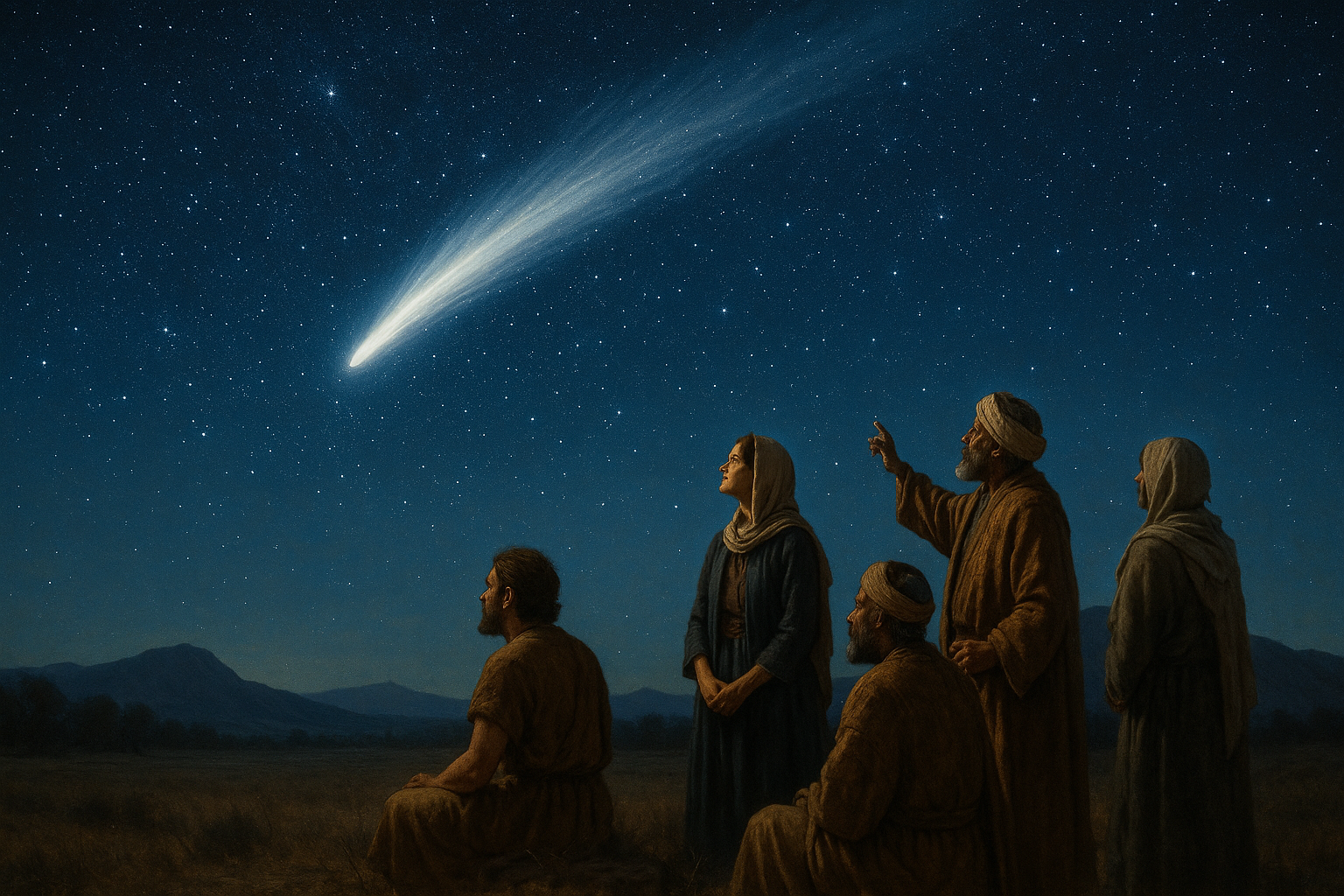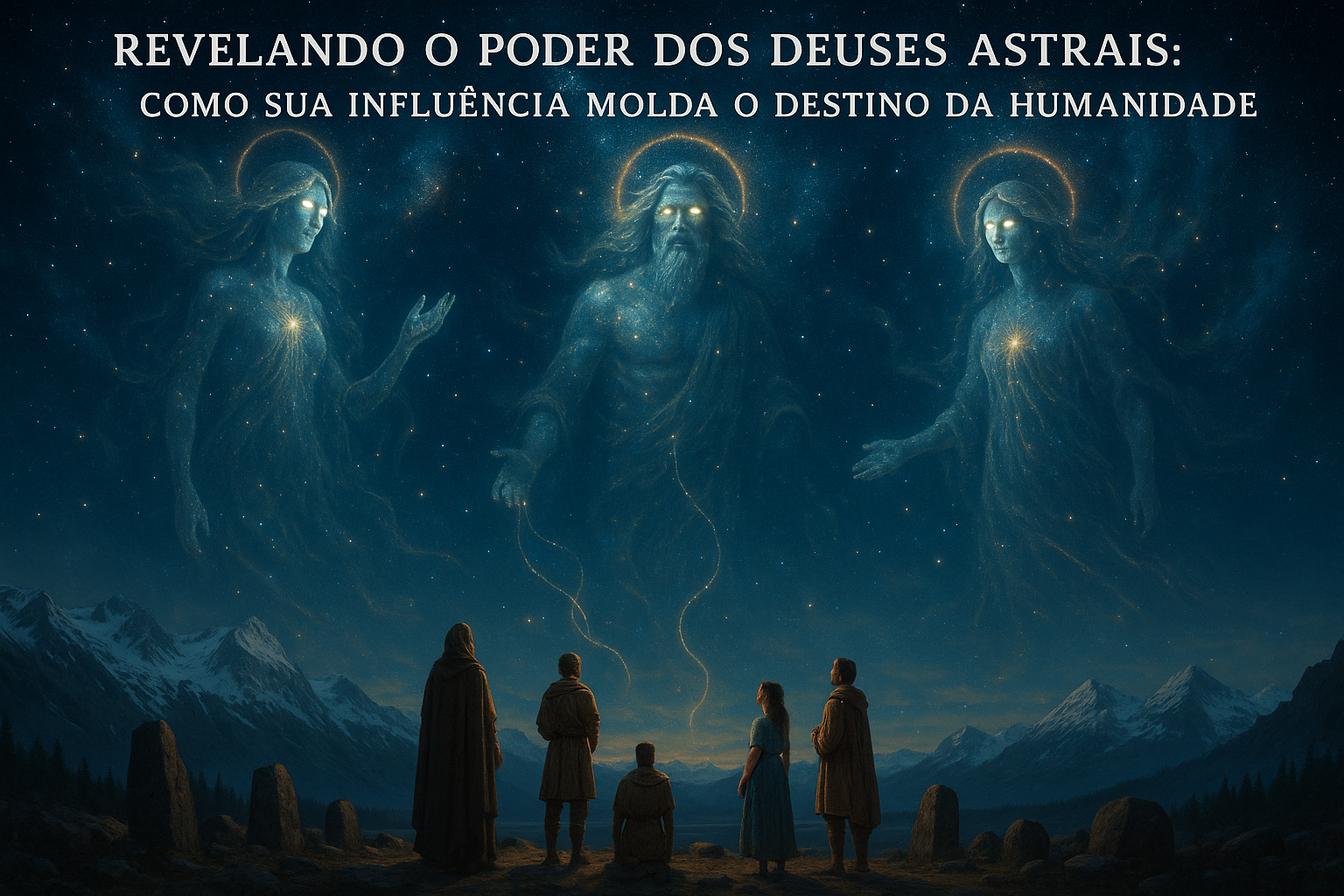As the world spins on its axis, marking the passage of time in a rhythm as old as the universe itself, humanity has always found profound meaning in the celestial dance of the sun. The solstices and equinoxes, those pivotal moments in the Earth’s journey around our star, have long been observed and celebrated by cultures across the globe. These astronomical events are not just markers of time; they are the bedrock of human tradition, a tapestry of festivals and rituals that weave together the past, present, and future. 🌍
Imagine standing in the heart of a Stone Age monument like Stonehenge, where the first rays of the summer solstice sun align perfectly with the ancient stones, or picture the vibrant hues of India’s Holi festival as people joyfully embrace the vernal equinox, welcoming the renewal of life with color and laughter. These celebrations are more than mere acknowledgments of seasonal change; they are a call to community, a reminder of our shared humanity, and an expression of gratitude for the Earth’s bounty. As we delve into the myriad ways different cultures honor these celestial events, you’ll discover a rich tapestry of human expression, from the reflective stillness of Japan’s Shunbun no Hi to the exuberant festivities of Brazil’s Festa Junina.
Throughout this article, we’ll explore how the solstices and equinoxes have inspired countless traditions, each with its own unique flavor and history, yet all united by a common theme: the connection between humanity and the cosmos. We’ll travel across continents and centuries, from the ancient Celtic festival of Samhain, which marks the end of the harvest and the beginning of winter, to the indigenous celebrations in the Americas that honor the sun’s life-giving energy. These stories reveal how cultures have not only adapted to the changing seasons but have also found joy and meaning in them, creating vibrant festivals that continue to thrive today.
As you journey through these pages, prepare to be enchanted by the diversity and creativity of human celebration. Whether it’s the solemnity of the winter solstice in the northern hemisphere, where the longest night of the year gives way to the hope of returning light, or the exuberance of the spring equinox, heralding the promise of rebirth and renewal, each festival offers a unique lens through which to view the world. Join us as we celebrate the changing seasons and the timeless traditions that unite communities around the globe, offering a glimpse into the universal human spirit that finds joy, reflection, and connection in the dance of the sun and the turn of the Earth. ☀️
The Significance of Solstices and Equinoxes
The solstices and equinoxes have been pivotal in shaping human culture and civilization. These astronomical events, which mark the change of seasons, have been celebrated for thousands of years across different cultures. The solstices occur twice a year when the Sun reaches its highest or lowest point in the sky at noon, resulting in the longest or shortest day of the year. The equinoxes, on the other hand, occur when day and night are approximately equal in length, marking the beginning of spring and autumn.
Understanding these celestial occurrences not only helps us appreciate the rhythm of nature but also reveals the deep connections our ancestors had with the cosmos. These events have guided agricultural practices, religious rituals, and community gatherings. The importance of solstices and equinoxes transcends time and culture, providing a fascinating lens through which to explore the unity and diversity of human traditions. 🌍
The celebrations often focus on themes of renewal, reflection, and gratitude, resonating with the changing energies of the Earth. As societies become more technologically advanced, these celebrations offer a way to reconnect with the natural world and acknowledge our place within it. From the grandeur of Stonehenge to the vibrant festivals in modern cities, the traditions surrounding these celestial events continue to thrive.
Winter Solstice Celebrations
The winter solstice, occurring around December 21st in the Northern Hemisphere, is a time of deep reflection and celebration of the return of light. As the shortest day and longest night of the year, it has been associated with rebirth and the triumph of light over darkness. Cultures worldwide have developed unique traditions to honor this pivotal moment in the calendar year.
One of the most famous winter solstice celebrations takes place at Stonehenge in England. This prehistoric monument aligns with the sunrise on the winter solstice, drawing thousands of visitors each year who gather to witness the ancient stones’ alignment with the celestial event. The history and mystery surrounding Stonehenge add a layer of intrigue and reverence to the celebrations.
In Scandinavian countries, the Yule festival marks the winter solstice with feasts, music, and fire. The burning of the Yule log is a symbolic gesture of welcoming the returning sun, offering warmth and light to the long winter nights. Similarly, in China, the Dongzhi Festival celebrates the arrival of winter with family gatherings and traditional foods like dumplings, signifying prosperity and unity. 🕯️
Spring Equinox Celebrations
The spring equinox, occurring around March 21st, heralds the arrival of spring in the Northern Hemisphere. This equinox represents balance and new beginnings, as day and night are approximately equal in length. Cultures worldwide have long celebrated this event as a time of renewal, fertility, and hope.
In Iran, the spring equinox marks the beginning of Nowruz, the Persian New Year, a celebration that dates back over 3,000 years. Nowruz festivities include cleaning homes, visiting family and friends, and setting a “Haft-Seen” table with seven symbolic items that represent life, health, and prosperity. The festival not only celebrates the arrival of spring but also embodies themes of renewal and community. 🌼
Similarly, in Japan, the spring equinox is celebrated during the festival of Shunbun no Hi. This national holiday is a time for Japanese people to visit family graves, clean their homes, and enjoy the blooming of cherry blossoms. The festival’s focus on nature and familial bonds underscores the cultural importance of harmony and renewal.
In the Mayan culture, the spring equinox is celebrated with great reverence at the ancient city of Chichen Itza in Mexico. The pyramid of Kukulkan, also known as El Castillo, is an architectural marvel that aligns perfectly with the equinox sun. As the sun sets, a shadow resembling a serpent descends the pyramid, symbolizing the return of the plumed serpent god, Kukulkan. This awe-inspiring phenomenon attracts thousands of visitors, eager to witness the ancient wisdom and craftsmanship of the Mayans.
Summer Solstice Celebrations
The summer solstice, occurring around June 21st, is the longest day of the year in the Northern Hemisphere. This event has been celebrated as a time of abundance, light, and joy. Many cultures associate the summer solstice with fertility, growth, and the peak of life and energy. 🌞
One of the most iconic summer solstice celebrations is the Midsummer Festival in Sweden. Known as “Midsommar,” this festival involves dancing around a maypole, singing traditional songs, and feasting on herring and new potatoes. The celebration, rooted in ancient pagan traditions, marks the height of summer and the beauty of nature. It’s a time for Swedes to connect with their rural heritage and enjoy the long daylight hours.
In Latvia, the summer solstice is celebrated with the festival of Ligo, a vibrant event filled with songs, bonfires, and wreath-making. Participants wear flower crowns and sing traditional folk songs to honor the sun’s power and the natural world. The bonfire, a central element of the celebration, symbolizes purification and protection against evil spirits.
In the United States, the summer solstice is celebrated at the Burning Man festival, held in the Nevada desert. Although not directly linked to the solstice, the festival embodies the spirit of creativity, community, and self-expression. Participants gather to create art, share experiences, and celebrate the human spirit in a unique and transformative environment.
Autumn Equinox Celebrations
The autumn equinox, occurring around September 23rd, marks the beginning of fall in the Northern Hemisphere. This equinox is a time of reflection and gratitude, as communities give thanks for the harvest and prepare for the colder months ahead. 🍂
In China, the Mid-Autumn Festival, also known as the Moon Festival, is one of the most significant autumn celebrations. Families gather to admire the full moon, enjoy mooncakes, and share stories and traditions. The festival emphasizes family unity, abundance, and the beauty of the natural world.
In the UK, the autumn equinox is celebrated with the Pagan festival of Mabon. This festival honors the second harvest and the balance between light and dark. Participants gather to share feasts, exchange harvest gifts, and reflect on the year’s accomplishments. Mabon is a time to give thanks for the abundance of the Earth and to prepare for the coming winter.
In Mexico, the Day of the Dead, or Dia de los Muertos, takes place in early November and has roots in ancient autumn equinox celebrations. This vibrant festival honors deceased loved ones with colorful altars, offerings, and festivities. The celebration reflects the belief that death is a natural part of the life cycle, and it provides an opportunity for families to come together and celebrate life.
- Discover how different cultures celebrate the solstices and equinoxes.
- Explore the rich symbolism and traditions associated with these events.
- Connect with the rhythms of nature through these timeless celebrations.

Conclusion
As we draw to a close on this exploration of how solstice and equinox festivals serve as vibrant unifiers of communities across the globe, it’s essential to reflect on the myriad ways these celebrations enrich our lives and foster a sense of global unity. Throughout the article, we delved into the diverse traditions that span continents and cultures, each uniquely celebrating the rhythms of nature and the shared human experience of change and renewal.
From the vibrant celebrations of Midsummer in Scandinavia, where communities gather to sing and dance around bonfires, to the introspective and spiritually enriching practices of the Winter Solstice among Indigenous cultures, we see how these events transcend mere festivities to become profound expressions of cultural identity and unity. The reverence for the Earth and its cycles is a common thread, weaving together varied traditions into a tapestry of human connection and environmental awareness.
One cannot overlook the significance of these festivals in the modern world. In a time where digital interactions often eclipse face-to-face engagements, solstice and equinox celebrations offer a valuable opportunity to reconnect with both nature and our fellow humans. They remind us of the importance of community, of gathering together in shared spaces to honor the cycles that govern our world. This communal spirit is crucial, not only for personal well-being but also for fostering a sense of belonging and purpose.
Moreover, these festivals act as a bridge between the past and the present, allowing us to honor ancient traditions while adapting them to our contemporary context. This adaptability is what keeps them alive and relevant, ensuring that they continue to be celebrated by future generations. By participating in these age-old traditions, we contribute to the preservation of cultural heritage, passing down stories, rituals, and wisdom that have been cherished for centuries.
The environmental consciousness that often accompanies these celebrations is another key takeaway. Many solstice and equinox festivals emphasize sustainable practices and encourage participants to reflect on their relationship with the Earth. In doing so, they inspire action and advocacy for the environment, reminding us of our responsibility as stewards of the planet.
In conclusion, the festivals of solstices and equinoxes are more than just celebrations of changing seasons. They are vital cultural events that unite communities, foster environmental awareness, and connect us to both our ancestors and the natural world. By participating in these celebrations, we honor the cyclical nature of life and our place within it.
We encourage you to delve deeper into the traditions of your own culture or explore those of others. Engage with your community, share stories, and perhaps even start new traditions that can be passed down through generations. Let’s continue to celebrate the changing seasons, embracing the lessons they offer and the unity they inspire.
Please feel free to share your own experiences and thoughts on solstice and equinox festivals in the comments below. By doing so, you contribute to a larger conversation and help keep these beautiful traditions alive. Together, let’s honor the past, celebrate the present, and look forward to a future enriched by these timeless celebrations. 🌍✨
For more insights on global traditions and cultural festivals, you can explore resources such as the Smithsonian Folklife Festival https://festival.si.edu/ and National Geographic’s coverage on global celebrations https://www.nationalgeographic.com/.
Thank you for joining us on this journey through the world’s solstice and equinox celebrations. May these traditions continue to inspire and unite us all.
Toni Santos is a visual storyteller and cosmic interpreter whose work illuminates the ancient skywatchers and their prehistoric astronomy—the profound ways early humans observed and revered the heavens before written history. Through a visionary lens, Toni explores how the stars, planets, and celestial cycles shaped myth, ritual, and survival in cultures lost to time.
Rooted in a fascination with archaic observatories, stone alignments, and celestial symbolism, Toni’s creative journey reveals the deep human impulse to understand and harmonize with the cosmos. From lunar phases guiding planting seasons to the sacred paths of the Milky Way, each of his works embodies the awe and knowledge encoded in the night sky.
Combining artistic craftsmanship with archaeological insight, Toni’s pieces evoke the mystery and precision of prehistoric astronomers. His work does more than depict—it channels the timeless dance between earth and sky, bridging ancient wisdom with contemporary wonder.
As the visionary behind Vizovex, Toni shares curated visuals, essays, and symbolic studies that invite others to reconnect with the cosmic heritage written in stone and starlight. His creations are a call to look upward, to listen to the silent stories told by the stars, and to honor the first astronomers who mapped the heavens with reverence and ingenuity.
His work is a tribute to:
The celestial wisdom of prehistoric peoples
The sacred geometry of ancient observatories
The enduring bond between human culture and the cosmos
Whether you’re a stargazer, a scholar of ancient mysteries, or someone captivated by the universe’s earliest storytellers, Toni welcomes you to journey through a space where the sky is both map and myth—one constellation, one ritual, one revelation at a time.




